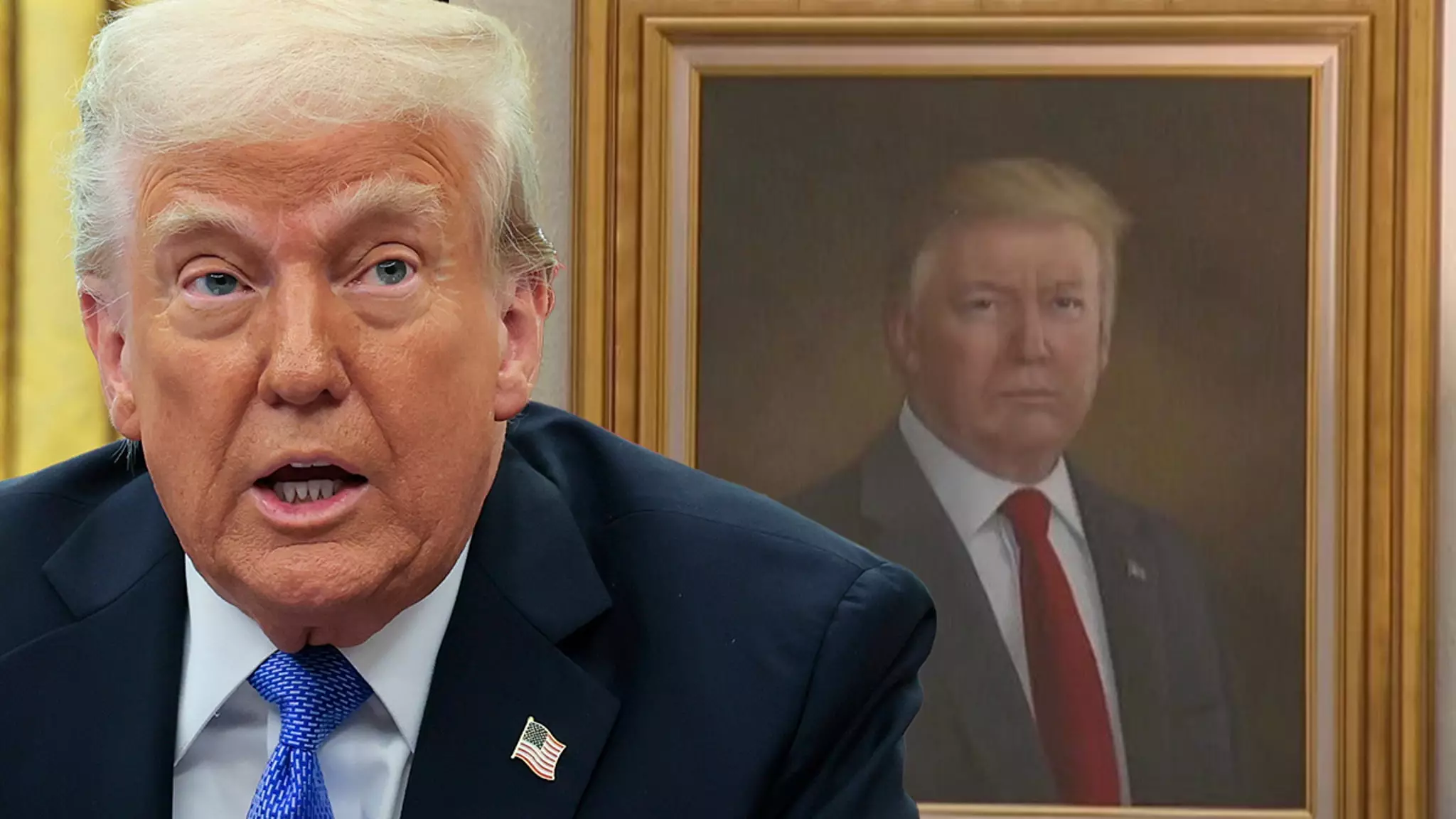Recently, the artistic choices at the Colorado State Capitol have landed in the national spotlight, particularly due to a striking portrait of former President Donald Trump. This piece, currently eliciting strong reactions, has caught the attention not only of local authorities but also the former president himself. A spokesperson from Governor Jared Polis’ office expressed surprise upon discovering Trump’s interest in the artwork, citing pride in the building’s history. The State Capitol has served as a historical and cultural emblem since its completion in 1901, showcasing Colorado’s unique materials and artistic legacy. However, it has now transformed into a battleground of public sentiment, as Trump publicly criticizes the artwork he believes to be disrespectfully exaggerated and unflattering.
Trump’s Outrage
Trump’s response is nothing short of theatrical. He took to Truth Social, leveraging his platform to voice his displeasure. Framing the portrait as a “purposefully distorted” representation, he claims it lacks the dignity offered to prior presidents, notably Barack Obama. By drawing a comparison, he not only critiques the artistic execution but also indirectly questions the artist’s credibility, suggesting that her skills have diminished over time. This paints a vivid picture of a leader still fixated on public perception and aesthetic presentation, exposing a deep-seated vulnerability beneath his bravado.
The Art of Controversy
This incident raises critical questions about the role of public art in political discourse. Art often mirrors society’s values and viewpoints, serving as a reflection of the culture and politics of its time. Trump’s outcry signifies a larger issue; how do we navigate the presentation of political figures in public spaces, and what standards are we held to when portraying them? The governor’s office’s acknowledgment of this dynamic as an opportunity to enhance visitor experiences hints at a potential path forward. It is evident that the intersection of art and politics can polarize opinions, yet it can also create opportunities for dialogue and meaningful engagement.
Implications for Governor Polis
Governor Polis now faces a challenging dilemma: should he heed Trump’s demands, potentially compromising the artistic integrity of the State Capitol, or uphold the decisions made by his office in the name of artistic expression? To yield to Trump’s demands would not only undermine the artist’s work but could also leave the governor vulnerable to future interventions regarding artistic representations. Conversely, failing to address Trump’s outcry may alienate constituents who may share the former president’s concerns over representation. As the situation unfolds, it remains to be seen if Governor Polis will rise to the occasion or acquiesce.
This scenario encapsulates the complexities of leadership in a divided political landscape. Art should provoke thought and inspire dialogue rather than serve as a mere reflection of public figures’ egos. The discourse surrounding Trump’s portrait offers a unique lens through which to examine the broader implications of aesthetic choices in public spaces—one where art, politics, and personal aesthetics collide in a spectacular fashion.

